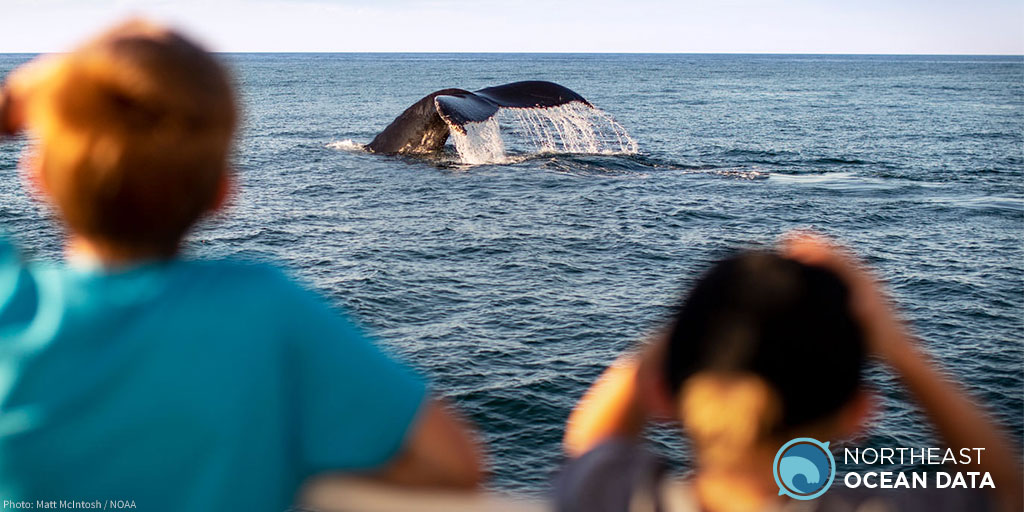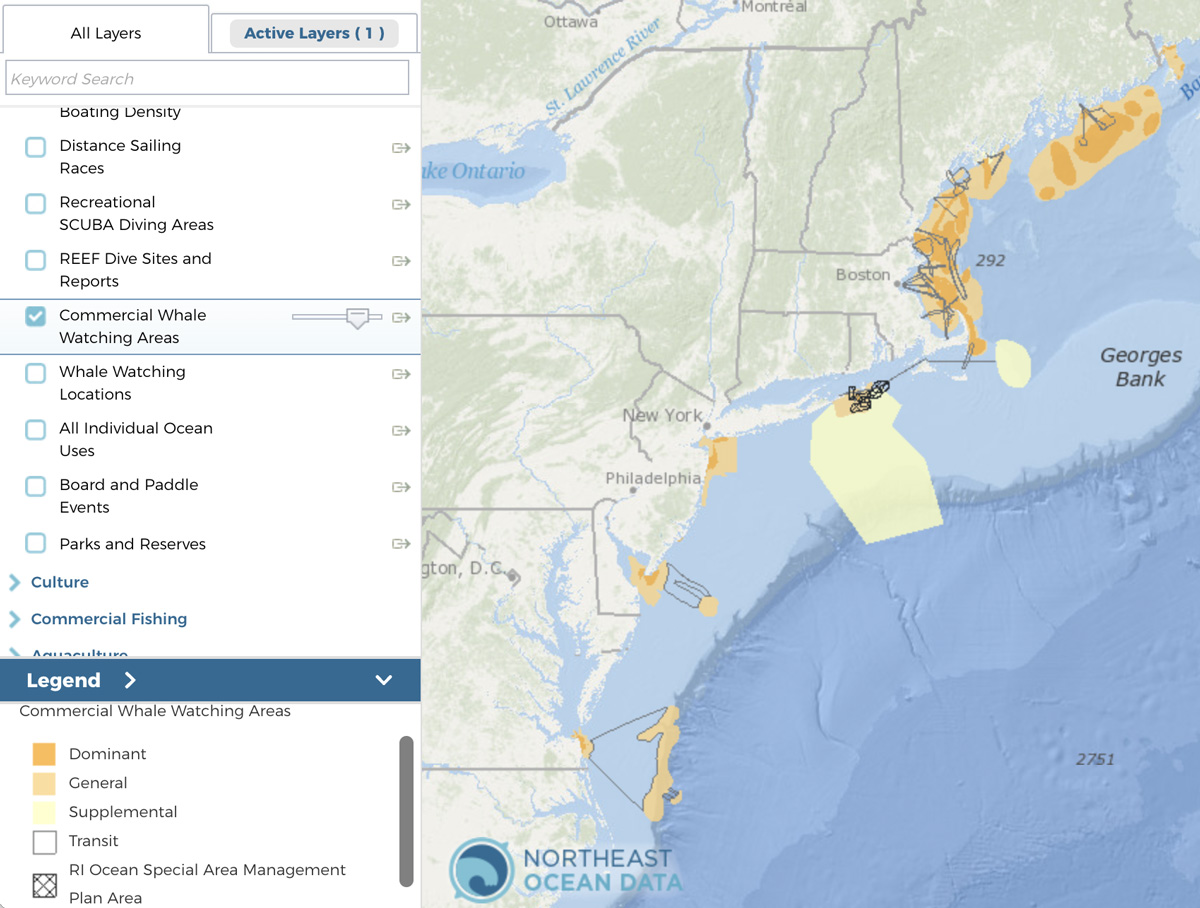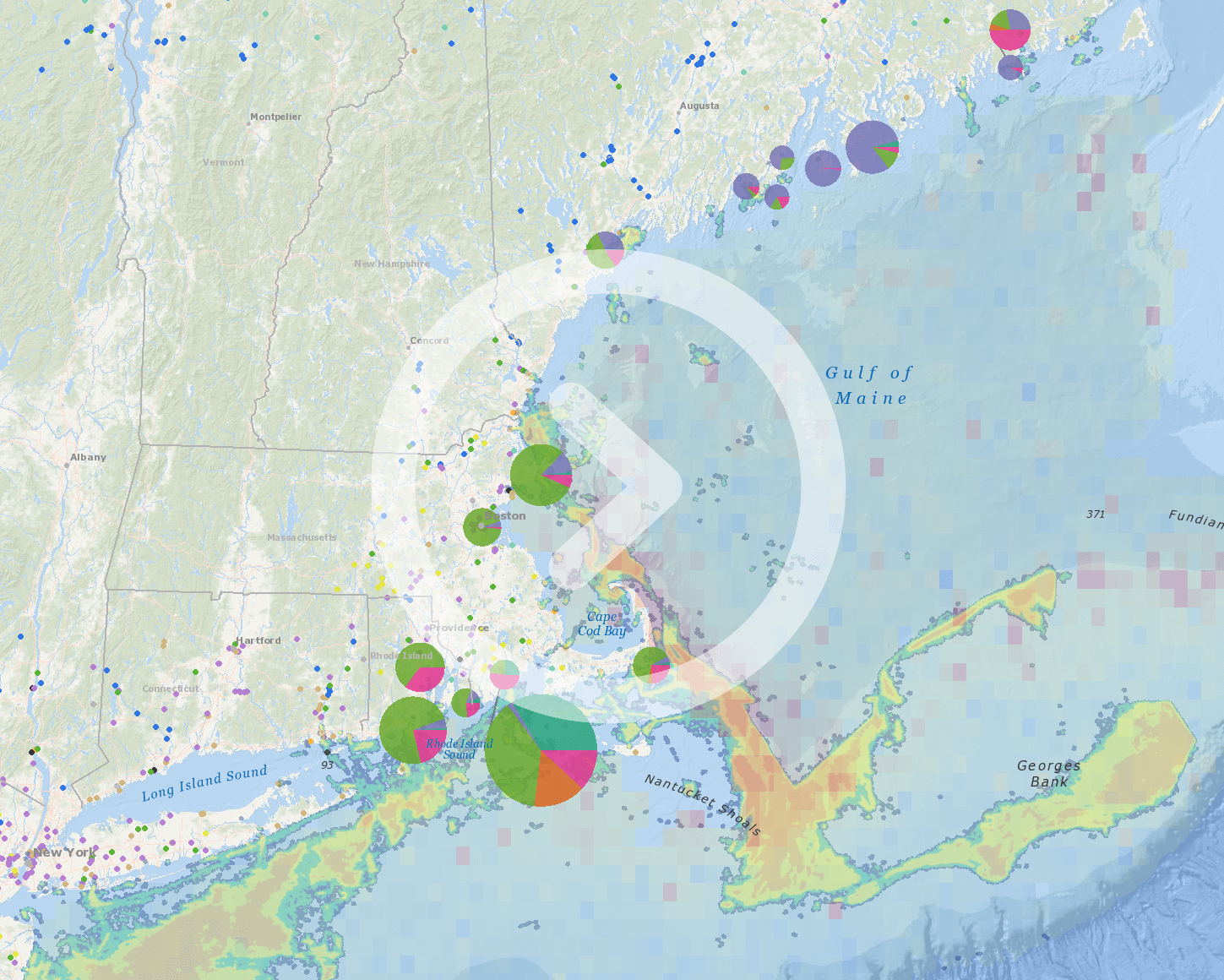
Whale watching in the northeastern US. Photo: Matt McIntosh / NOAA
The Commercial Whale Watching Areas dataset, which was just updated last year by the Northeast Ocean Data Portal Working Group, now depicts whale watching areas in the Mid-Atlantic region as well.
The Mid-Atlantic Regional Council on the Ocean (MARCO) obtained input provided by tour operators (including owners, captains and naturalists) and marine mammal experts as well as an analysis of Automatic Identification System (AIS) tracks for tour vessels operating in the region from 2015-20. Using AIS data, MARCO created an initial map to simulate “Dominant” (most frequently toured) areas and “General” areas for whale and dolphin watch tours from the New York Harbor vicinity to the Virginia coast. The map was refined following a series of meetings in 2021 and 2022 with the tour operators and experts.
Once complete, the Mid-Atlantic data was combined with the existing map layer on the Northeast Ocean Data Portal to create a consolidated map showing watch areas from Maine through Virginia. In additional to Dominant and General tour areas shown in the Northeast and Mid-Atlantic regions, the Northeast data included the following additional categories, which are still visible in the combined layer:
- Transit routes used for transit to and from General or Dominant use areas.
- Supplemental areas used for closely related activities and infrequent specialty trips.
- RI Ocean Special Area Management Plan areas mapped as part of the Rhode Island Ocean Special Area Management plan and symbolized separately to reflect different data collection methodologies.
The map is chiefly focused on operators whose primary activity entails regularly scheduled trips dedicated to finding and observing whales and dolphins in their natural habitat. There are many additional vessels in the region that offer whale and dolphin watches as a smaller portion of their operations. Users are encouraged to consult the metadata for additional details on the map.


